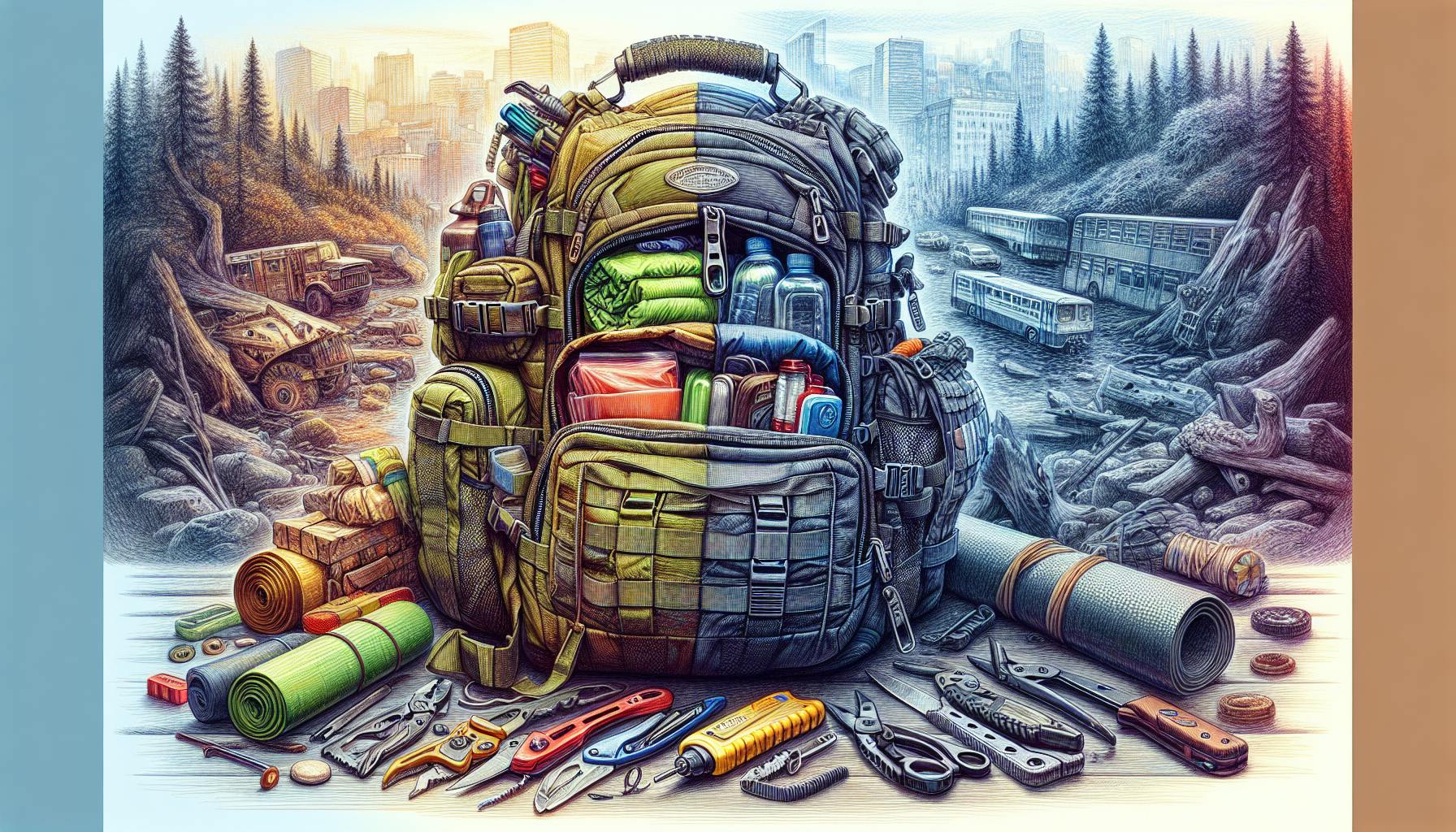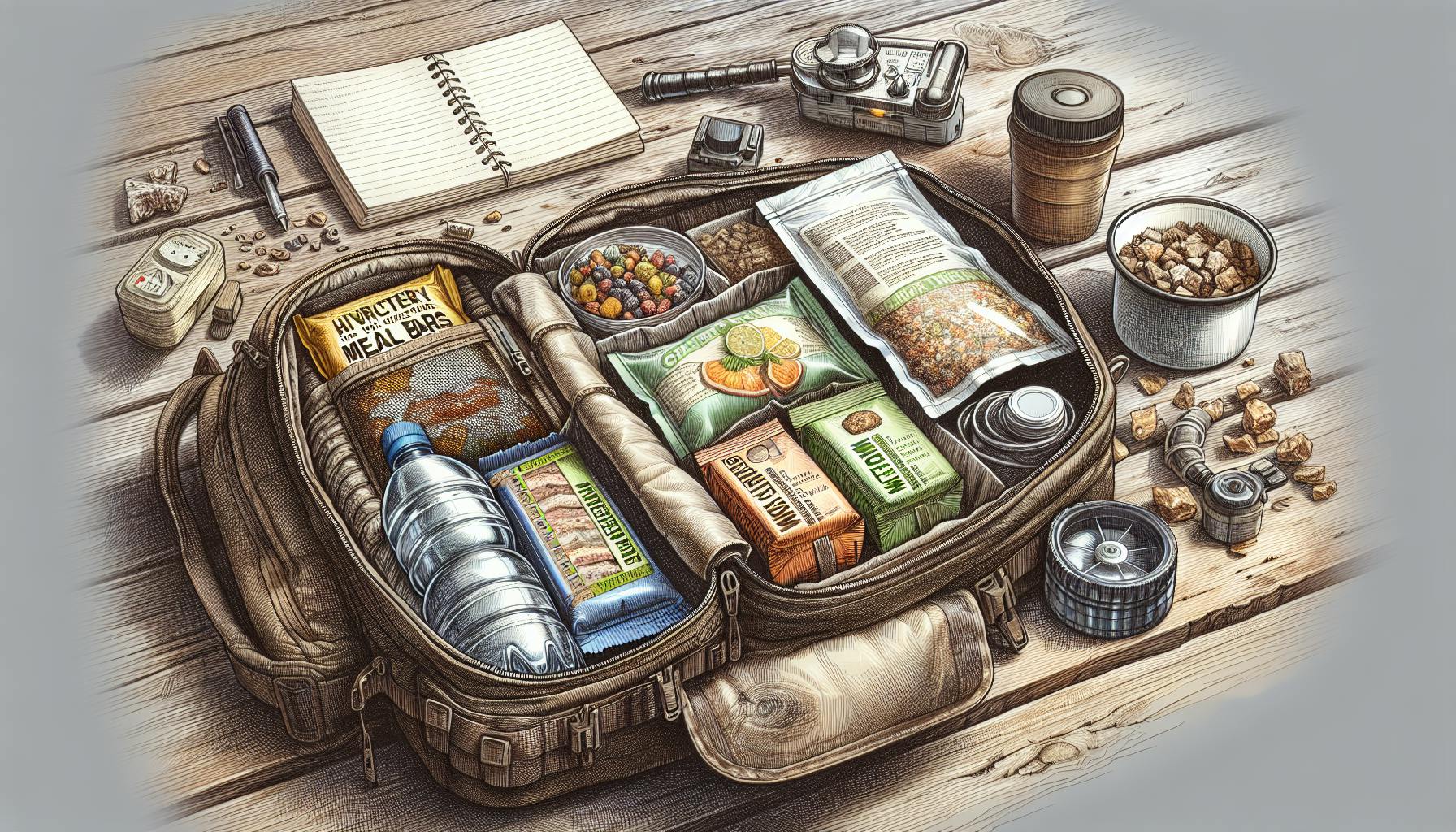Introduction
Having a well-stocked emergency supply kit is one of the most important preparations you can make for potential disasters or emergencies. At a minimum, your emergency supply kit should contain water, non-perishable food, first aid supplies, flashlights, batteries, medicines, copies of important documents, and other essentials tailored to your family's needs. Customizing your kit allows you to account for factors like allergies, dietary restrictions, prescription medications, children's needs, pets, and likely risks in your region such as earthquakes, wildfires, or winter storms. Assembling your kit now and maintaining it regularly gives you invaluable peace of mind.
Assessing Your Needs
Take stock of your family's unique considerations when deciding what to include in your emergency supply kit:
- Consider the types of disasters most likely to occur in your area. For example, if you live in California, you may need earthquake supplies like sturdy shoes and water purification tablets. In the Midwest, prepare for tornadoes with a weather radio and hard hats.
- Factor in the size and demographics of your family. More people will require more supplies. Kids and seniors have specific needs like formula, toys, and medications.
- Account for any vital prescription medications, medical equipment like glasses or hearing aids, and dietary restrictions. Make a list to ensure they are included.
- Decide the length of time you want to be self-sufficient - FEMA experts recommend at least 3 days worth of supplies. Prepare for longer if possible.
- Research recommended contents lists from reliable sources like ready.gov and the CDC to form the basis of your kit.
Water - The Most Critical Supply
Water is absolutely essential for survival, so stock plenty:
- Store at least 1 gallon per person per day for drinking and sanitation. Reliable brands like CamelBak or Hydro Flask offer durable, sealed containers.
- Rotate supplies every 6 months. Replace any containers that were opened or damaged. Mark your calendar with a reminder.
- Consider adding coffee filters or LifeStraw Portable Water Filters as a backup if utilities are impacted.
- Add electrolyte flavoring packets like Emergen-C to make drinking emergency water more palatable. Proper hydration is key.
Long-Lasting Food Options
Choose foods that don't require any cooking or refrigeration:
- Pack high-calorie granola bars, protein bars, trail mix, and nuts. Clif Bars and Kind Bars sustain energy levels.
- Include pull-top canned goods like vegetables, fruits, beans, tuna, chicken, and soup. Replace annually. Mountain House makes reliable canned meals.
- MREs and Wise Foods freeze-dried camping meals provide an easy hot meal option if you have a heat source.
- Adhere to expiration or best by dates and rotate stock every 6-12 months.
- Store familiar foods your family already eats to avoid waste - comfort foods help reduce stress.
First Aid Supplies
Having basic medical gear can help treat minor injuries. The Red Cross recommends having the following supplies for a family of 4:
- Adhesive bandages (100)
- Gauze pads (8 x 10, 4)
- Rolled gauze (2 rolls)
- Triangular bandages (3)
- Antibiotic ointment (1 tube)
- Antiseptic wipes (20)
- Thermometer (1)
- Tweezers (1)
- Medications - both prescription and over-the-counter pain relief, antihistamines, etc.
Don't forget:
- Prescriptions for at least 2 weeks
- First aid manual
- Medical gloves (2 pairs)
- CPR breathing barrier
Proper sanitation is also key:
- Hand sanitizer (1 bottle)
- Garbage bags (20)
- Plastic ties (100)
- Bleach
Essential Tools and Sundries
Round out your kit with these miscellaneous items:
- Manual can opener, like the Swing-A-Way Can Opener
- Multipurpose knife, like a Leatherman Sidekick
- Matches or lighter for food prep
- Flashlights like Streamlight Polytac, batteries
- Weather radio like Midland ER310 to stay informed without power.
- Cash, copies of ID cards and insurance policies. Store in waterproof bag.
Don't forget simple toiletries:
- Toilet paper, feminine products, soap
- Towelettes, garbage bags and ties for waste
Also useful:
- Duct tape, paracord, multi-tool, work gloves
Customizing Your Kit
Expand your emergency kit based on additional needs within your family:
Children and Infants
Little ones have specific concerns, so pack:
- Formula, bottles, pediatric foods, plus extras diapers and wipes.
- Any prescription medications, diaper rash ointment.
- Pacifiers, small toys, books to reduce stress. Soft blankets provide comfort.
- Child-friendly shelf-stable juice pouches or milk boxes for hydration.
Adults and Seniors
Special health needs increase with age, so include:
- Extra month's supply of prescription drugs, plus spare eyeglasses.
- Mobility aids like canes, walkers, plus extra batteries for hearing aids.
- Soft, easy-to-chew foods adhering to any dietary restrictions.
- Doctors' contact information and medical history summaries.
- Warm layers like hats, gloves, socks and thermal underwear.
Pets
Don't forget your furry friends! Add:
- Pet food, treats, collapsible bowl for water. Litter and box for cats.
- Medications, health records, vet contact info. A pet first aid guide.
- Sturdy leash and collar with ID tag, crate or carrier for safe transport.
- Registration info, microchip details, current photos of your pet.
- Familiar toys or bedding to reduce stress.
Entertainment
Boredom can be dangerous, so include:
- Portable board games, deck of cards, books, magazines.
- Battery powered radio to tune into emergency broadcasts.
- Chargers for cell phones or other devices to stay connected.
- Paper, pens, pencils for games like hangman.
- Crossword puzzles, mad libs, word search books.
Sheltering Supplies
If sheltering in place, have extras like:
- Tents, tarps, sleeping bags, blankets, cots, cooking stove.
- Camping cookware like pots, plates, utensils.
- Fire extinguisher - learn proper use.
- Headlamps, flashlights, battery powered lanterns.
- Heavy duty garbage bags and ties for waste disposal.
Maintaining Your Emergency Kit
Check your emergency supply kit regularly to keep it updated and functional:
Take Inventory
Do a full kit review every 6 months:
- Identify any damaged, expired or missing items needing replacement. Update your checklist.
- Check quantities against recommended supply lists. Restock as needed.
- Remove unusable or obsolete supplies that have been replaced.
- Add new items based on family changes like aging, pets, prescriptions.
Check Expiration Dates
Many kit items have limited shelf life:
- Carefully check expiration or best by dates on food, water, OTC meds.
- Prescriptions expire after 1 year - track this closely.
- Replace batteries every 6-12 months to keep devices powered.
- Swap out medical supplies like bandages annually.
- Update personal documents if contacts or policies change.
Consider Storage Conditions
Proper storage preserves longevity:
- Keep kit in a cool, dry place away from direct sun, heat, or moisture.
- Use airtight, waterproof containers to prevent spoilage.
- Avoid areas with bugs, rodents, or molds that could contaminate supplies.
- Ensure all family members can easily access the kit.
Practice Usage
Test your preparations via occasional drills:
- Do a trial run to check kit contents and practice skills. Time how long it takes to get supplies.
- Open and consume some food and water as if the emergency was real.
- Discuss improvements or additions needed after the drill. Update your kit and plans accordingly.
Replace Used Items
Replenish any gear or supplies deployed:
- Restock first aid items, batteries, food, water.
- Replace worn or damaged equipment.
- Update documents or get new prescriptions.
- Repack comfort items for pets or kids.
Having a complete, up-to-date emergency supply kit provides invaluable peace of mind for major disasters or emergencies. Use this guide to assemble your customized kit, then maintain it regularly so it's ready whenever needed. For great deals on emergency supplies, be sure to visit WeLovePrepping.com. Stay safe out there!
Key Takeaways
- Emergency kits should contain at least 3 days of essential supplies tailored to your family.
- Customize your kit based on health needs, ages, pets and likely regional risks.
- Rotate perishable supplies and check expiration dates every 6 months.
- Include food, water, first aid, tools, sanitation items, important documents.
- Maintain your kit with occasional practice drills and regular inventory checks.
- An up-to-date emergency supply kit gives you invaluable peace of mind.


